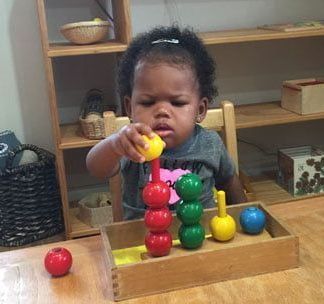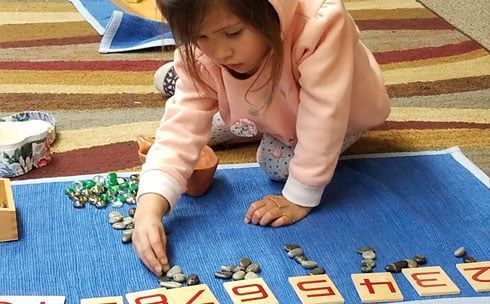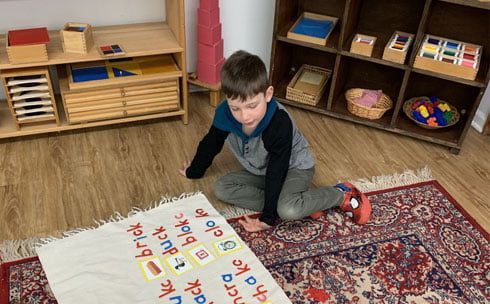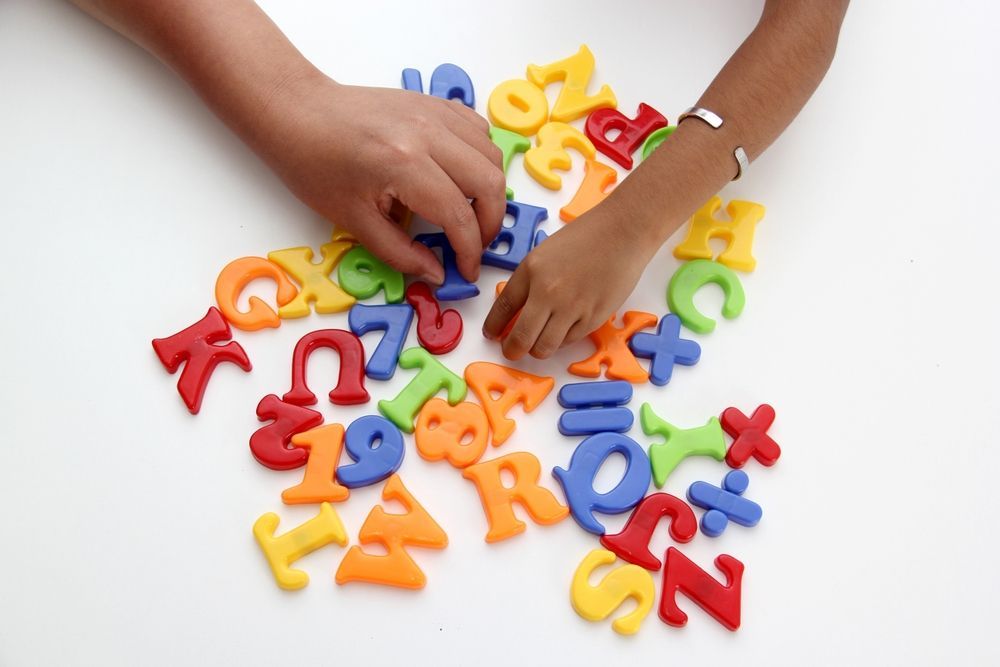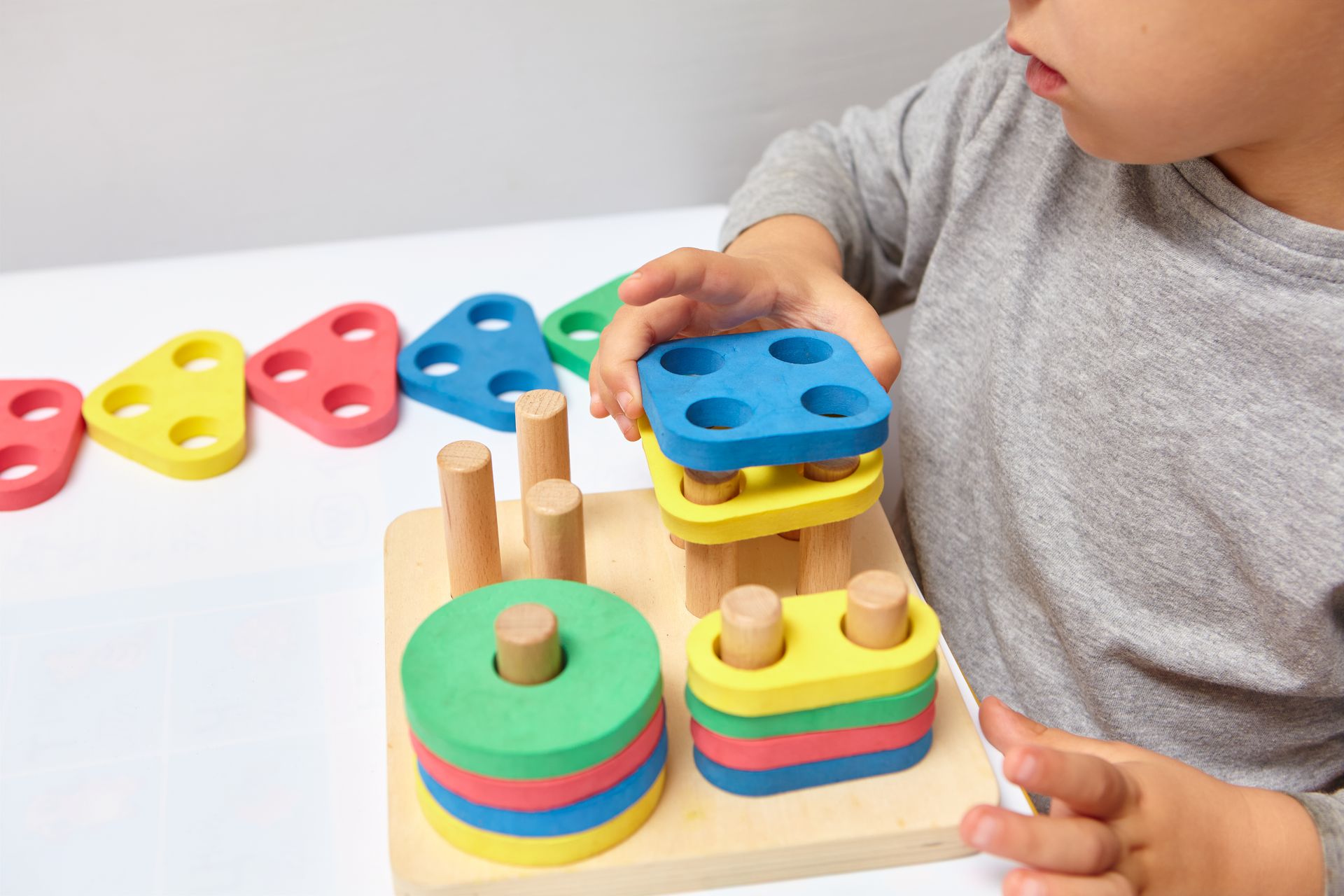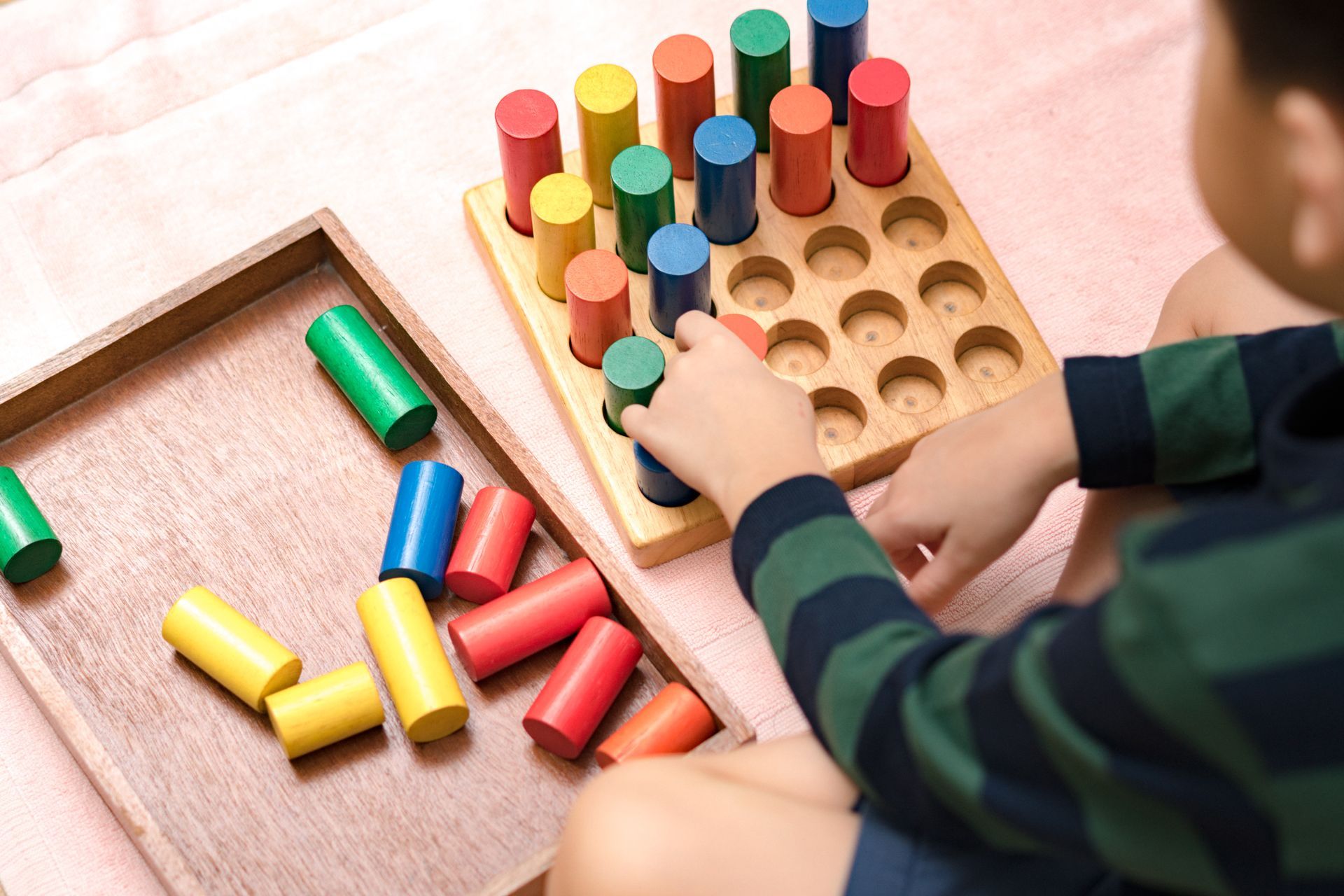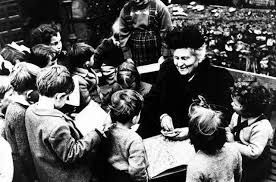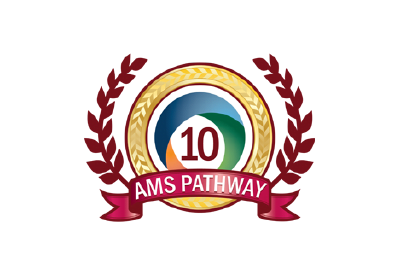Montessori Method at Home: Top Do’s and Don’ts
Share this Article:
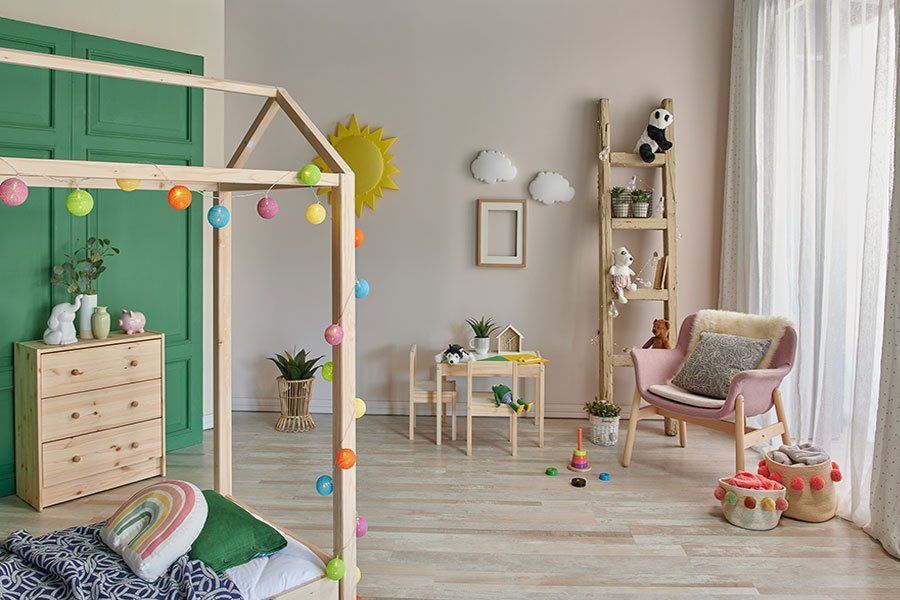
Embracing Montessori learning in the home is a wonderful addition to your child’s Montessori education that creates a consistent learning approach. Are you wanting to learn the top do’s and don’ts of Montessori at home? In the content below, we address common Montessori practices to do in the home, as well as techniques that go against the grain of Montessori learning.
5 Successful Strategies for Montessori Method at Home
Montessori learning encourages creativity and learning through one’s own nature. As a result, your toddler can adapt to different learning environments while still practicing the Montessori method. Furthermore, you can create a Montessori educational experience for your child without spending large sums of money .
Below, we explore five successful strategies for using the Montessori method at home that are free and easy to implement immediately.
Montessori Strategy #1: Simplify Your Supply
Preparing and simplifying your home for Montessori learning is not necessarily about buying new, wooden, non-battery-operated toys. Alternatively, to create a distraction-free environment, the most important thing to do is declutter, organize, and restructure your child’s learning areas.
To effectively simplify your home, donate toys your child no longer needs and neatly organize the remaining toys and materials. Then, use open shelves or bookshelves to clearly display a select number of toys within your child’s reach. Organization is best for kids to learn and expect that there is a place for everything.
Montessori Strategy #2: Rotate Toys
With the remaining toys that would otherwise clutter your open shelves and bookshelves, place them in storage and out of sight. As a result, you can rotate them with currently displayed toys. Rotating toys help engage your child’s interest and imagination as you can regularly put out “new” toys for your toddler to enjoy.
As you continue offering limited options, you will soon notice the toys that spark your child’s curiosity the most. Additionally, you can perceive when a once-beloved toy has remained on the shelf for a whole week untouched. As a result, you can better determine when to rotate the toys out for something different.
Montessori Strategy #3: Imagine With Them and Ask Thought-Provoking Questions
The Montessori method encourages a child to use their imagination to the fullest, and the world is their oyster. For parents who want to instill Montessori learning at home, an important learning objective is to facilitate building creativity in your child.
Therefore, delve into their mindset to understand how they think. Then, use that opportunity to collaborate with them.
Below are some imaginative activities to help your child expand their creative horizon:
- Creating stories with your child helps them think about “what’s next?”
- Take turns asking “Would-you-rather” questions (i.e. “Would you rather be able to fly or run at super-sonic speed?”)
- Hang interesting artwork at their eye level and ask them to make up a story about what is in the painting or drawing.
- Read stories together, using different voices for each character.
- Let them give a performance, featuring their own songs and dance moves.
- When learning about new things, ask them what they think about it.
Montessori Strategy #4: Encourage Concentration
Concentration is an important attribute for your child to develop and strengthen. One of the best ways to help your child’s concentration development is through completing an entire activity.
Unfortunately, technology and screen time are unhelpful for children in this area. Fast-paced technology gives your child the expectation that everything must be completed quickly and fails to boost confidence and self-control in your child.
Therefore, encourage your child to work through a complete process and help to build them up for more advanced work that they will see in the future with core subjects like math and science. For example, a great activity that encourages concentration is using a squeegee on a wet mirror or equivalent surface to get it completely dry and clean.
Montessori Strategy #5: Be the “Prepared Adult” at Home That the Teacher is in the Classroom
If everything is last minute, children will face a hard transition from home to school. Therefore, preparation immensely helps the parent at home.
As routine and consistency are primary components of Montessori learning, create and follow a morning routine and schedule so everyone knows what to expect. If your child is involved in the process, establishing a routine will happen sooner.
Here are some ways you can help set up expectations for your child:
- Talk about things the night before
- Before bedtime, help them set out their clothes for the following day
- Keep your home environment-friendly to help your kids get prepared in the morning by themselves
- Remain firm on created expectations for the next day’s events
If your toddler child changes their mind the next morning, have a calm discussion about sticking with a decision. Do not react emotionally. Alternatively, go to their eye level to talk with them calmly and respectfully. Make the moment a learning opportunity using Montessori language .
Additionally, refrain from always giving praise and rewards for good behavior. Although encouragement is great and necessary for a successful learning environment, you do not want your child to begin expecting a reward for every good deed.
5 Common Mistakes with Montessori at Home
If you are new to Montessori learning, it may take some time getting used to its method and lifestyle. However, do not be discouraged! While taking note of the Montessori Do’s and Don’ts, below are five Montessori mistakes to avoid at home.
Montessori Mistake #1: Micromanaging Activities
While it is important to monitor the safety of your child and be prepared with routines or schedules, you must also stray from “micromanaging” your child’s every activity. The Montessori method heavily encourages children to explore their learning liberties and discover new things.
Although this does not make Montessori a child’s free-for-all, they should be given the liberty to learn in their time. One way in which parents unintentionally micromanage their child’s activity time is by interrupting or directing their play. Although suggestions and helping are necessary at times, interruptions can disrupt the natural rhythm in which children work.
Therefore, before intervening in an activity, use the opportunity to observe your child and see how he or she processes new materials and instructions. You may be surprised to learn how long your child can focus on a single activity and concentrate at the task at hand.
Montessori Mistake #2: Mixing Sleep Areas with Play Areas
Be cautious when scrolling through Pinterest for ideas concerning transitioning your child’s bedroom to better suit the Montessori method. Have you ever seen horizontal mirrors stationed directly above or right next to the toddler’s floor bed? Despite Pinterest-worthy images deeming this a Montessori essential, the practice is a significant Montessori “Don’t!”
Your child’s bed and mirror should always be separate from one another. While the floor bed area is for sleep and relaxation for your toddler, the mirror should be stationed in the play area to encourage active play and movement. It is paramount that you distinguish the two areas and avoid confusing your child.
Montessori Mistake #3: Skipping Sensory Materials
Sensory activities are crucial for young children from birth to elementary! Although Montessori capitalized on learning environments encouraging math, language, and practical life skills, it does not neglect the incorporation of sensory learning.
Using multiple learning materials that encourage your child to practice their five senses enhances your child’s educational experience. Therefore, encourage working with hands-on projects that awaken their sensory learning!
Montessori Mistake #4: Introducing Too Much, Too Soon
Although parents want to promote learning and growth in their child’s development, it is easy to overstimulate your child. Therefore, it is important to ask, “ what should my child be able to do at their age ?”
By examining what developments your child can begin building or strengthening based on their age bracket, you can determine which learning activities to introduce. By exposing them to too many activities at an age when they cannot comprehend the activity, you risk lessening the impact of the learning material.
For example, it may be hard to teach your child how to write if he or she has yet to strengthen fine motor control. Therefore, begin with working with paintbrushes dipped in water to help them practice in dexterity.
Montessori Mistake #5: Ignoring Your Child’s Point of View
Naturally, children have curious personalities, creating the foundation of their learning. However, by failing to consider your toddler’s literal point of view can hamper their learning experience.
Therefore, honor their desire to learn by preparing a proper environment that guides your child’s education and development. To best examine what needs to be better suited for their point of view, follow your child around and observe.
Below are a few questions to consider:
- Are his or her toys easily accessible?
- Is the artwork in the bedroom or playroom away from their eye-level?
- Are the eating utensils and drinkware for your child too large to easily use?
- Do you have stools available for your child to easily access the sink or countertop?
- What child-size furniture can your child use for independent learning or activity?
Adjusting a few minor elements according to your toddler’s point of view will help them get the most out of their learning experience
Montessori Learning Strategies with Mansio
At Mansio Montessori of Geneva , we are dedicated to preparing your toddler’s development with optimal learning environments that stimulate educational development both at home and in school. By tailoring the educational experience to each child, we inspire our students with a passion for learning.
If you want to learn more about our early childhood programs and what these may look like for your child, please contact us.

